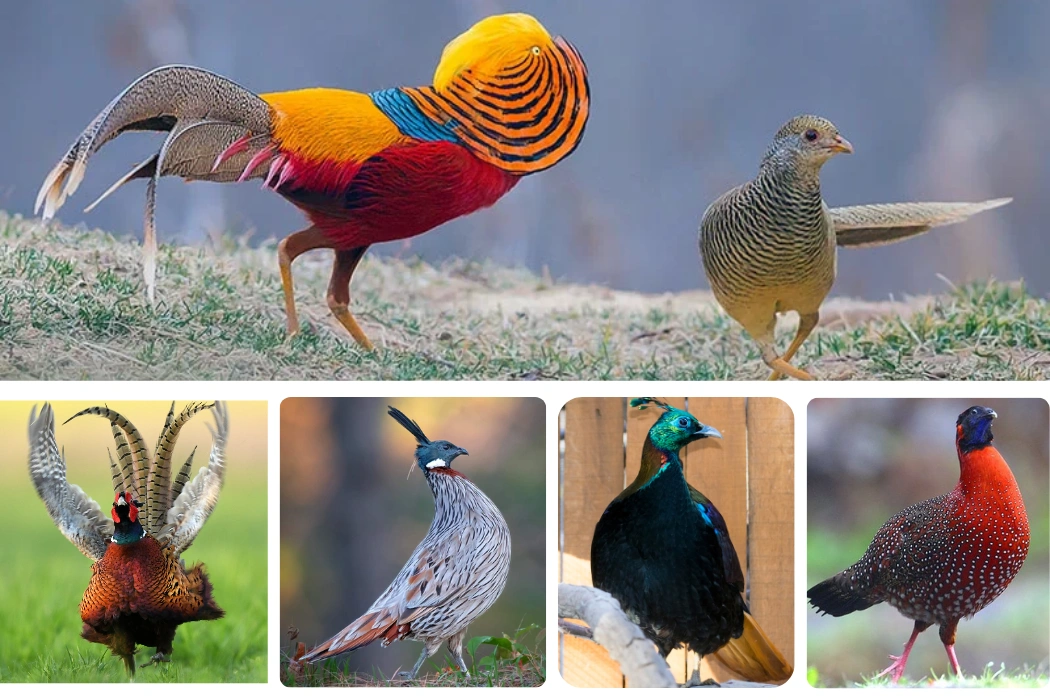20 Fascinating and Rarely Known Facts About Pheasants
Pheasants are more than just beautiful birds; they’re full of surprises. With their dazzling feathers, quirky behaviors, and deep connections to ancient cultures, pheasants capture our imagination and teach us about the natural world. This post’ll uncover 20 rarely known, highly unique, and astonishing facts about these remarkable birds. From their earthquake-detecting abilities to their prehistoric lineage, each point will leave you in awe of these feathered wonders.
Here are 20 highly unique and rarely known fun facts about pheasants that are sure to surprise and delight:
1. Pheasants Can Detect Earthquakes 🌏
The Green Pheasant, Japan’s national bird, is highly sensitive to vibrations and is known to react seconds before an earthquake occurs.
2. Longest Tail in the Bird World 🪶
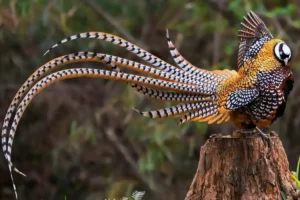
The Reeves’s Pheasant has the longest tail feathers of any bird, measuring up to 6 feet. This makes its tail longer than the bird’s own body!
3. Golden Pheasant’s Cloak of Camouflage 🟡
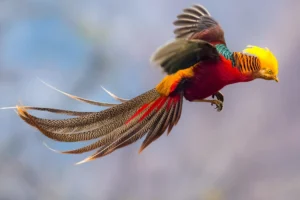
Despite its vivid colors, the Golden Pheasant blends remarkably well in its natural habitat of dense forests and bamboo thickets, thanks to its patterned plumage.
4. They’ve Been Around for Millions of Years 🦖
Fossil records suggest that pheasants and their ancestors have existed for over 20 million years, making them a link to prehistoric times.
5. Pheasant Courtship is a Spectacle 💃
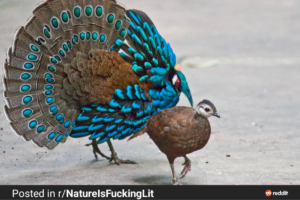
During mating season, male pheasants like the Temminck’s Tragopan inflate blue throat patches and fleshy horns, putting on elaborate displays to woo females.
6. Feathers That Don’t Fade 🌈
The brilliant iridescent colors of pheasants, such as those on the Palawan Peacock-Pheasant, are not due to pigments but structural coloration, meaning they never fade.
7. The “Exploding Pheasant” Escape 💥
Startling a pheasant can trigger an “explosive flight,” where the bird bursts from the ground at up to 40 miles per hour, surprising predators and onlookers alike.
8. Blood Pheasant is Named After Its Plumage ❤️
The vivid red streaks on the chest and face of the Blood Pheasant resemble splashes of blood, inspiring its name.
9. Green Pheasant’s Unique Call 🔊
The Green Pheasant has a distinctive and loud call, often likened to a “cawing laugh.” In Japan, their call is seen as a harbinger of spring.
10. Pheasants Are Polygamous 💌
Many pheasants, including the Golden Pheasant, are polygamous, with males mating with multiple females during the breeding season to ensure genetic diversity.
11. Peacock Relatives 🦚
Pheasants belong to the same family as peacocks (Phasianidae), making the Green Peacock and Palawan Peacock-Pheasant close relatives.
12. Rare Winter Survivors ❄️
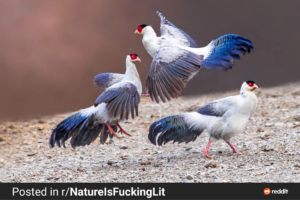
Eared Pheasants are among the few bird species that can withstand freezing temperatures, thanks to their thick plumage and social flocking behavior.
13. Reeves’s Pheasant is Symbolic in China 🇨🇳
The Reeves’s Pheasant symbolizes longevity and prosperity in Chinese culture, appearing in traditional art and folklore.
14. Himalayan Monal: The “Rainbow Bird” 🌈
The Himalayan Monal is nicknamed the “rainbow bird” because its iridescent feathers shift colors with changing light, creating a kaleidoscopic effect.
15. Pheasant Eggs Are Nutrient-Rich 🥚
Pheasant eggs are smaller than chicken eggs but are packed with nutrients. In some cultures, they’re considered a delicacy.
16. Speed on the Ground 🏃
While pheasants are strong fliers, they prefer to run. The Common Pheasant can sprint up to 10 miles per hour to evade predators.
17. Conservation Efforts Brought Back Edwards’s Pheasant 🛡️
Once thought extinct, the Edwards’s Pheasant was rediscovered in Vietnam in 1996, thanks to intense conservation efforts.
18. The Great Argus “Wall of Eyes” 👁️
The Great Argus Pheasant displays its wing feathers during courtship, creating the illusion of a massive wall covered in eyes to impress females.
19. Lady Amherst’s Pheasant is Rare in the Wild 🌲
Though once abundant, wild populations of Lady Amherst’s Pheasant have dwindled, and they are now primarily found in captivity.
20. Pheasants Have Incredible Vision 👀
Pheasants have a wide field of vision and can see at almost 360 degrees, allowing them to detect predators from nearly any angle.
These fun facts showcase the beauty and diversity of pheasants and highlight their glamorous behaviors, adaptations, and cultural significance.
Which fact surprised you the most? Let me know! 🌟

